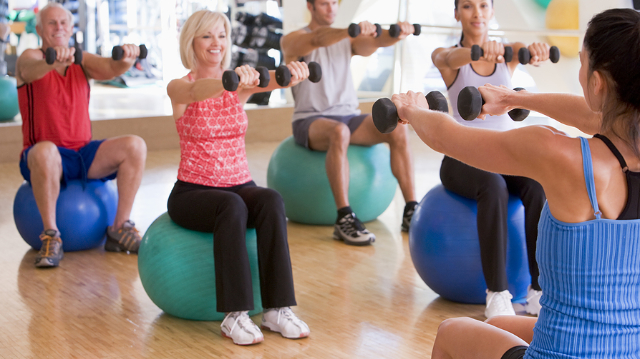News
Review finds that exercise is one of the best ways to prevent falls

The incidence of falls is expected to continue rising
Falls are one of the biggest problems that older adults face. Data has shown that approximately 36% of adults over the age of 65 will experience a fall every year, and each one of these accidents can have serious implications. Not only can a fall result in a serious injury or death, but older individuals that do fall go on to have more anxiety and depression, and a reduced quality of life as a result. The world's population is also aging, which means that the incidence of falls is expected to continue rising with it. This shows why it's so important to identify methods that will help prevent falls among older persons. Many prevention methods are available and a great deal of research has been conducted on this subject, but a comprehensive review that ranks all of these methods is yet to be performed. With this in mind, a team of researchers conducted a powerful pair of studies called a systematic review and meta-analysis to determine which interventions were most effective for preventing falls in older adults.
Four medical databases searched for relevant studies
The team of researchers performed a search of four major medical databases for studies that evaluated the effectiveness of fall-prevention programs for the elderly. This led to 1,210 articles being screened and 283 randomized-controlled trials (RCTs) being accepted. RCTs are high-quality individual studies that are considered the gold standard for determining how well a treatment or intervention works. Once collected, the data from each of these RCTs were analyzed and compared to one another to detect trends and develop conclusions on the most beneficial fall-prevention programs. Researchers also assessed the quality of studies, which helped them gauge how reliable their results were.
Exercise consistently found to reduce the risk for falling
A total of 54 RCTs with 39 different interventions focused on the risk of falls that caused injury, and the findings from these studies showed that some of the most effective interventions for reducing this risk included exercise, vision assessment, and environmental assessment and modification. Another 158 RCTs with 77 interventions focused on the number of fallers, and once again, exercise was amongst the most effective strategies for reducing this figure. Other positive interventions included orthotic devices, dietary modifications and calcium and vitamin D supplementation. Most of the included RCTs had a low risk of bias, which means their quality was high and their findings could be consistently relied upon. Taken together, these results strongly suggest that exercise is one of the best possible methods for reducing the risk for falling and the number of falls in the elderly population. Other interventions like dietary and home-based modifications, vision assessments, orthotics and supplements also appear to be helpful and may be recommended in addition to exercise. Older adults who may be at risk for falling are therefore encouraged to visit a physical therapist for an exercise treatment program. These programs are based on patients' needs and abilities, and when followed, can help reduce the risk of falls and keep seniors safer.
- As reported in the November '17 issue of JAMA
September 18, 2018
Disclaimer:
The information in the articles, posts, and newsfeed is intended for informational and educational purposes only and in no way should be taken to be the provision or practice of physical therapy, medical, or professional healthcare advice or services. The information should not be considered complete or exhaustive and should not be used for diagnostic or treatment purposes without first consulting with your physical therapist, occupational therapist, physician or other healthcare provider. The owners of this website accept no responsibility for the misuse of information contained within this website.
